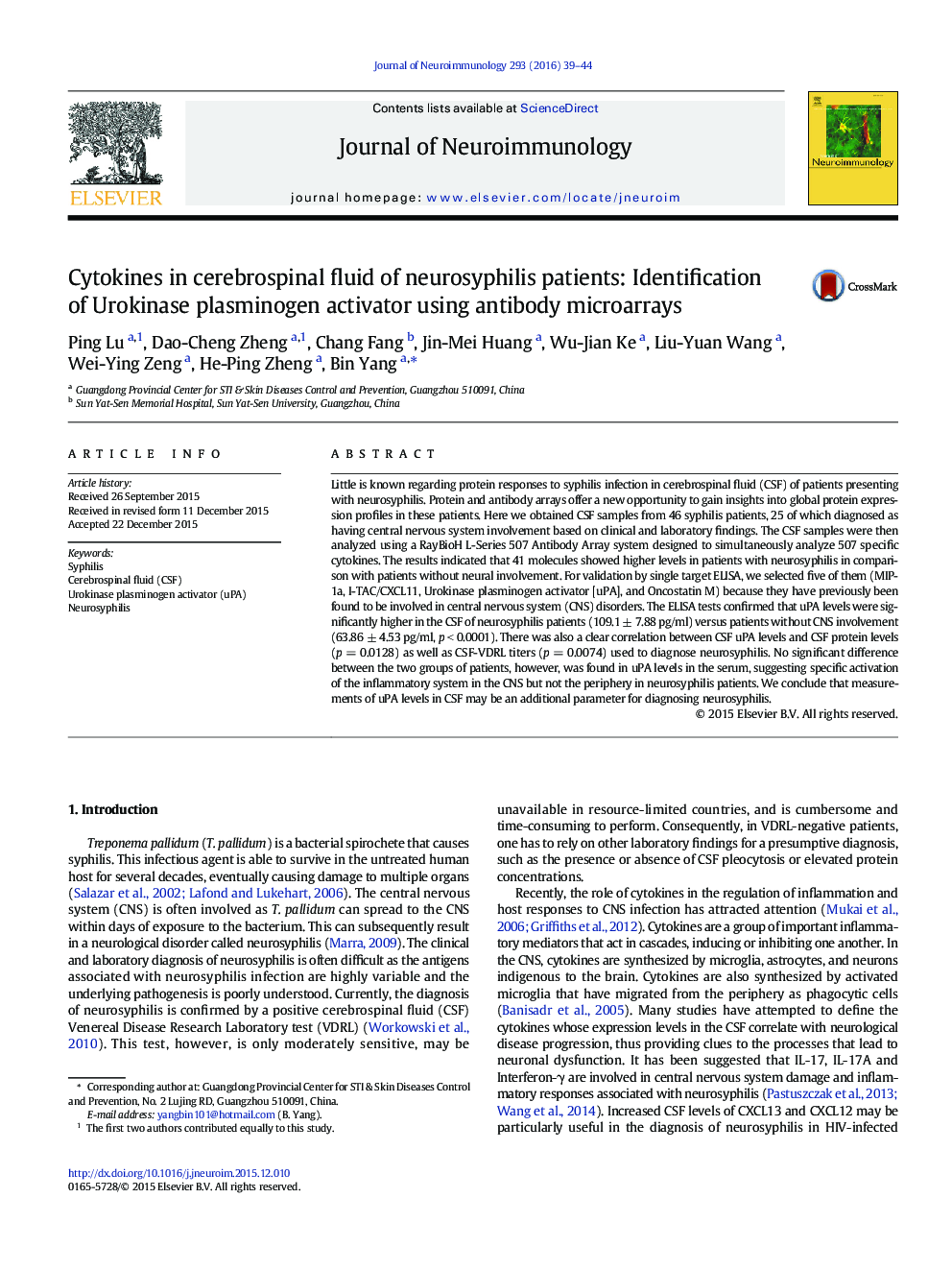| کد مقاله | کد نشریه | سال انتشار | مقاله انگلیسی | نسخه تمام متن |
|---|---|---|---|---|
| 3063842 | 1580381 | 2016 | 6 صفحه PDF | دانلود رایگان |
• We examine the 507 proteins in the CSF of neurosyphilis patients through Protein Microarray Assay.
• The highly elevated CSF uPA levels are strongly associated with neurosyphilis.
• There was no significant difference in uPA serum concentrations between neurosyphilis patients and syphilis patients without neural involvement, which suggests that the increased CSF uPA levels in neurosyphilis patients reflect enhanced synthesis by cells in the brain.
Little is known regarding protein responses to syphilis infection in cerebrospinal fluid (CSF) of patients presenting with neurosyphilis. Protein and antibody arrays offer a new opportunity to gain insights into global protein expression profiles in these patients. Here we obtained CSF samples from 46 syphilis patients, 25 of which diagnosed as having central nervous system involvement based on clinical and laboratory findings. The CSF samples were then analyzed using a RayBioH L-Series 507 Antibody Array system designed to simultaneously analyze 507 specific cytokines. The results indicated that 41 molecules showed higher levels in patients with neurosyphilis in comparison with patients without neural involvement. For validation by single target ELISA, we selected five of them (MIP-1a, I-TAC/CXCL11, Urokinase plasminogen activator [uPA], and Oncostatin M) because they have previously been found to be involved in central nervous system (CNS) disorders. The ELISA tests confirmed that uPA levels were significantly higher in the CSF of neurosyphilis patients (109.1 ± 7.88 pg/ml) versus patients without CNS involvement (63.86 ± 4.53 pg/ml, p < 0.0001). There was also a clear correlation between CSF uPA levels and CSF protein levels (p = 0.0128) as well as CSF-VDRL titers (p = 0.0074) used to diagnose neurosyphilis. No significant difference between the two groups of patients, however, was found in uPA levels in the serum, suggesting specific activation of the inflammatory system in the CNS but not the periphery in neurosyphilis patients. We conclude that measurements of uPA levels in CSF may be an additional parameter for diagnosing neurosyphilis.
Figure optionsDownload high-quality image (74 K)Download as PowerPoint slide
Journal: Journal of Neuroimmunology - Volume 293, 15 April 2016, Pages 39–44
